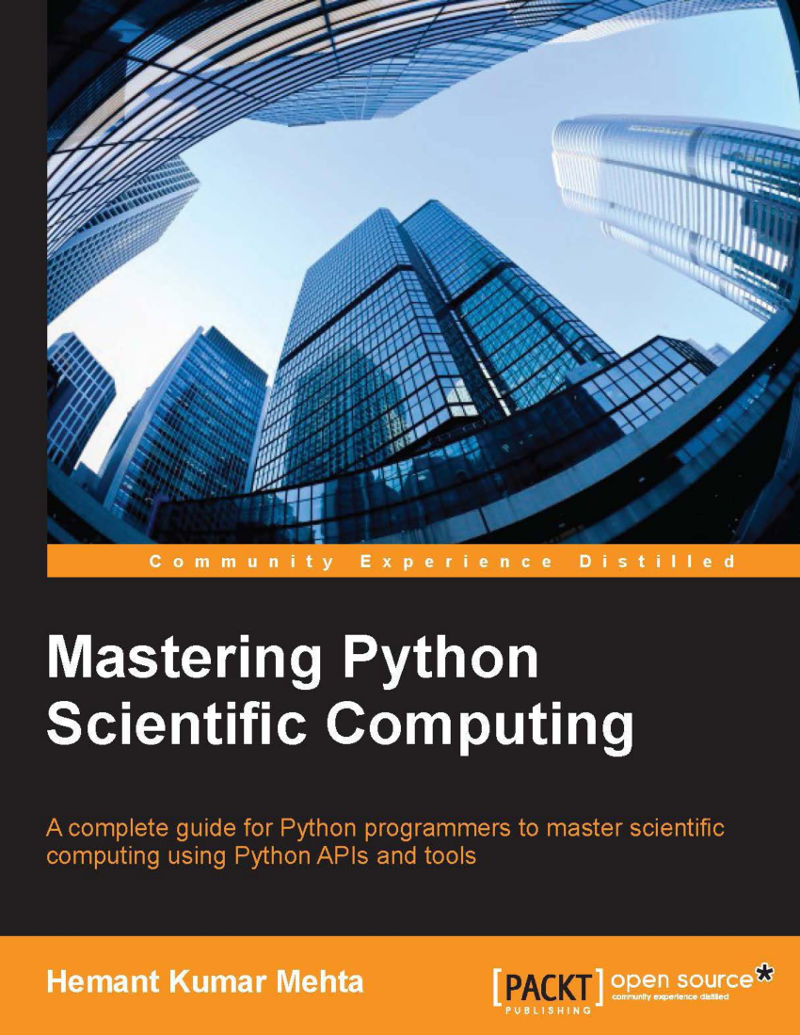
I was asked to review “Mastering Python Scientific Computing” (authored by Hemant Kumar Mehta and published in 2015 by Packt Publishing). I was disappointed by the book. The title lead me to believe that it would help me to achieve mastery. I don’t feel that it brought me any closer to this goal. To be sure, the book contains a lot of useful information. But the way that it is written is a weird compromise between high level overview and low level details. And it’s the middle ground in between, where explanations are given and a link is made between the details and the global picture, which I normally find most instructive.
A complete guide for Python programmers to master scientific computing using Python APIs and tools. Mastering Python Scientific Computing
I had high hopes for this book. I tried to love this book. But in the end, despite my best efforts, I got completely frustrated after Chapter 5 and just gave up. Here’s the Table of Contents and some notes on the first two chapters.
- The Landscape of Scientific Computing and Why Python?
The first chapter presents an overview of Scientific Computing with some examples of applications and an outline of a typical workflow. It then digs rather deeply into the issue of error analysis before giving some background on the Python programming language. Although Python and Scientific Computing are central to this book, I found an introduction to both topics within a single chapter to be a little disconcerting. - A Deeper Dive into Scientific Workflows and the Ingredients of Scientific Computing Recipes
This chapter starts off by addressing a range of techniques used in Scientific Computing, including optimisation, interpolation and extrapolation, numerical integration and differentiation, differential equations and random number generation. Attention then shifts to Python as a platform for Scientific Computing. A lengthy list of relevant packages is given before Python’s capabilities for interactive computing via IPython are introduced. The chapter concludes with a description of symbolic computing using SymPy and some examples of Python’s plotting capabilities. - Efficiently Fabricating and Managing Scientific Data
- Scientific Computing APIs for Python
- Performing Numerical Computing
- Applying Python for Symbolic Computing
- Data Analysis and Visualization
- Parallel and Large-scale Scientific Computing
- Revisiting Real-life Case Studies
- Best Practices for Scientific Computing
The book is riddled with numerous small errors. These really should have been picked up by the author and editor, or indeed by either of the two reviewers credited at the front of the book. I have submitted errata via the publisher’s web site, which were duly acknowledged.